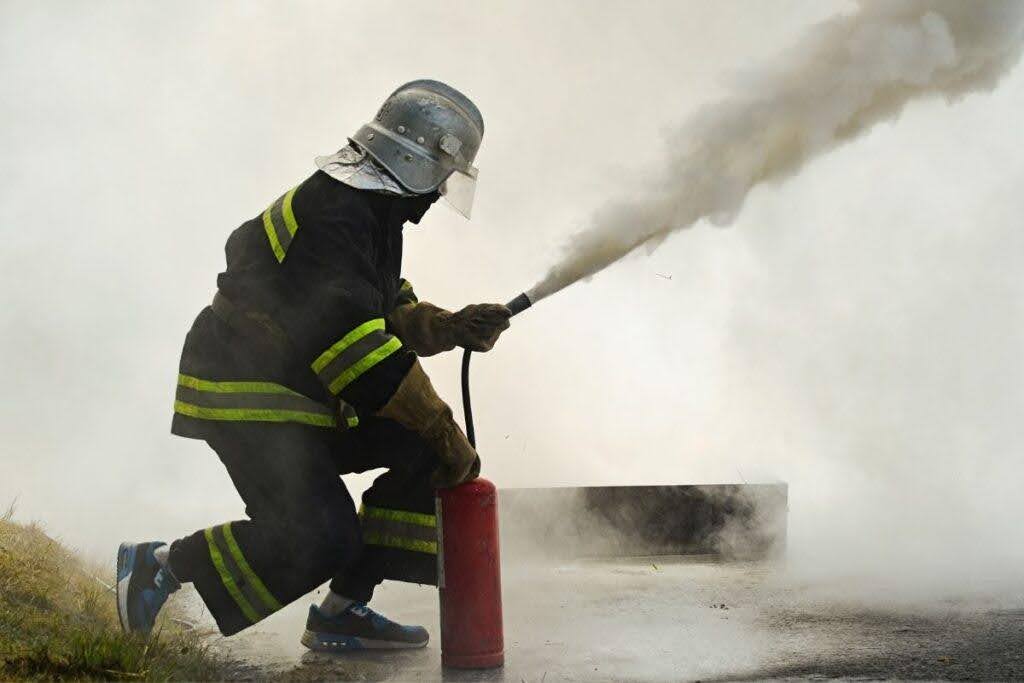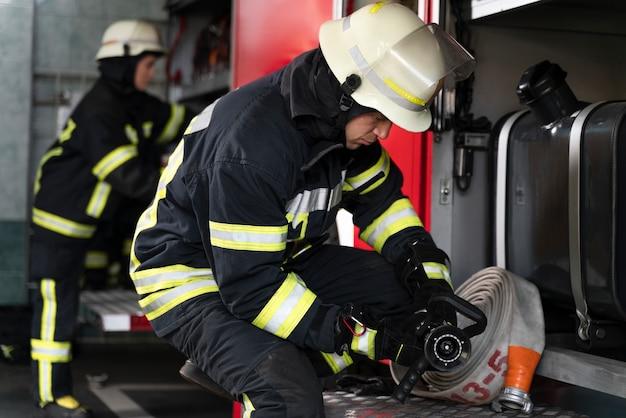The Different Health Conditions Firefighters Exposed To AFFF May Suffer
According to the National Fire Protection Association, fire departments across the U.S. respond to an average of 1.5 million fires each year. These brave men and women are the first line of defense for our communities, putting their lives on the line to protect people and property.
Author:Finn WildeReviewer:Michael RachalMay 20, 20246.9K Shares385.3K Views

According to the National Fire Protection Association, fire departments across the U.S. respond to an average of 1.5 million fires each year. These brave men and women are the first line of defense for our communities, putting their lives on the line to protect people and property.
For decades, Aqueous Film-Forming Foam (AFFF) has been a firefighter's go-to tool for tackling stubborn petroleum-based blazes. However, recent studies have raised concerns about common health issues caused by AFFFexposure, prompting a closer look at the potential risks associated with this firefighting agent.
What are Per-and Polyfluoroalkyl Substances (PFAS)?
Per-and Polyfluoroalkyl Substances (PFAS) are a large group of man-made chemicals that make up AFFF. These chemicals boast a strong bond between carbon and fluorine, making them incredibly resistant to breakdown.
This strength translates to a double-edged sword: PFAS are highly effective at extinguishing fires but also persist for a long time in the environment and can accumulate in our bodies.
How Can Firefighters Be Exposed to AFFF?
During training exercises and real-life fire situations, firefighters can be exposed to AFFF in several ways. Inhalation of fumes occurs when the foam is dispersed, and skin contact happens during application or from contaminated gear.
Perhaps the most unexpected exposure route is ingestion. Contaminated water runoff from firefighting activities can pose a risk if accidentally swallowed.
Short-Term Health Effects
The immediate effects of AFFF exposure are typically respiratory and tend to clear up quickly. Firefighters may experience coughing, wheezing, and shortness of breath after inhaling fumes or firefighting in a poorly ventilated space.
Skin and eye irritation are also common, causing rashes, itching, and discomfort. While unpleasant, these short-term issues are less concerning than the potential long-term health effects, garnering increased attention.
Long-Term Health Effects
The potential long-term health effects of AFFF exposure are a growing concern. Studies suggest a link between AFFF exposure and an increased risk of certain cancers.
- Kidney Cancer: The kidneys act as filters, removing waste products from the blood. This may make them more susceptible to damage from PFAS, potentially leading to an increased risk of kidney cancer.
- Testicular Cancer: This uncommon cancer can develop in the testicles after exposure to PFAS. Research suggests PFAS may alter cells, compromising testicular function.
- Bladder Cancer: The bladder's role in eliminating waste may put it at risk from PFAS accumulation. Studies suggest a link between AFFF exposure and an increased risk of bladder cancer.
- Prostate Cancer: While research is ongoing, some studiesindicate a potential correlation between higher PFAS exposure and prostate cancer.
- Liver Cancer: The link between AFFF exposure and liver cancer is still under investigation, but ongoing research is crucial to understanding the full picture.
- Breast Cancer: PFAS are known to disrupt hormones, and hormonal fluctuations are a risk factor for certain cancers, including breast cancer.
Beyond cancer, AFFF exposure may impact other bodily systems:
- Leukemia and Lymphoma: These blood cancers can develop when PFAS infiltrates white blood cells, a vital part of the immune system.
- Rectal Cancer: Studies suggest AFFF exposure may increase the risk of rectal cancer, potentially harming cells in the rectum as the body processes PFAS.
- Thyroid Cancer: Some studies have shown an increased risk of thyroid cancer in individuals with higher PFAS exposure.
- Colorectal Cancer: The long-term effects of PFAS on the colon and rectum are being investigated, with potential links to colorectal cancer emerging.
Firefighters exposed to AFFF may also experience fertility issues, including difficulty conceiving and a higher likelihood of miscarriage or stillbirth. Additionally, AFFF exposure may be linked to ulcerative colitis, an inflammatory bowel disease.
It's important to note that research into the full range of potential health effects from AFFF exposure is ongoing. As scientists continue their investigations, we may learn more about the long-term consequences of AFFF use.
Recommendations for Firefighters
Several vital recommendations are essential for firefighter safety in light of these potential health risks. First, increased awareness about the risks of AFFF exposure is crucial. Firefighters and fire departments should be fully informed about the potential consequences. Second, the consistent use of proper Personal Protective Equipment (PPE) during training and firefighting operations is vital to minimize contact with the foam.
Finally, regular health screenings for firefighters with potential AFFF exposure is essential for the early detection and intervention of any health problems. By prioritizing these measures, we can help safeguard the well-being of the brave men and women who protect our communities.
Ongoing Research and the Future
The fight for the safety of firefighters doesn't end here. Research into the health effects of AFFF exposure continues, with scientists diving deeper to understand the full spectrum of potential consequences.
This ongoing research is crucial for future policies. Thankfully, the development of safer firefighting foam alternatives is also underway, offering hope for a future where firefighters can effectively combat blazes without risking their health.
With continued research and innovation, we can strive for a future where firefighter safety and effective fire suppression are achievable.

Finn Wilde
Author
For Finn Wilde, the wilderness is more than just a destination - it’s a way of life. Over the past decade, he has led multiple expeditions in some of the world’s most remote regions, from the icy fjords of Greenland to the rugged trails of Patagonia.
Finn emphasizes sustainability in all of his adventures, helping participants connect with nature while promoting responsible exploration. His expeditions inspire individuals to explore the great outdoors while fostering a deep respect for the environment.

Michael Rachal
Reviewer
Michael Rachal believes that luxury lies in the details. With over 20 years of experience in the luxury travel industry, he has crafted hundreds of bespoke itineraries for clients seeking personalized, unforgettable experiences.
Whether guiding clients through private cultural tours or curating culinary journeys with world-renowned chefs, Michael ensures that each trip is tailored to perfection.
His ability to anticipate needs and exceed expectations has earned him a reputation as a leading expert in luxury travel.
Latest Articles
Popular Articles
